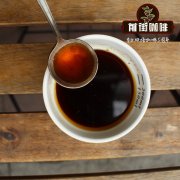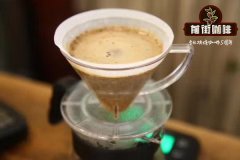Jamaica Blue Mountain RSW Manor Coffee Introduction Jamaica Blue Mountain Coffee is good to drink?

Professional coffee knowledge exchange More coffee bean information Please pay attention to coffee workshop (Weixin Official Accounts cafe_style)
RSW Estate consists of three estates: Resource, Sherwood Forest and Whitfield Hall, all of which are members of Blue Mountain Estate Coffee, and were established before 1800. The coffee cherries harvested from the three estates are concentrated in Sherwood Forest Estate's processing yard for processing, peeling, washing, fermentation, sun drying and storage of shelled green beans. The yield is only 1% of the production of Blue Mountain beans.
Resource Estate is located in Yallahs Valley, about an hour and a half drive from Kingston, the capital city. Resource Estate is owned by Cecil Langford. The coffee planting area has expanded from 4 hectares 40 years ago to 12 hectares at present. In the past, Resource had its own peeling equipment and sun drying field, but now coffee berries are moved to Sherwood for processing; The coffee is grown on the slopes of the northwest Blue Mountains at an elevation of about 1,200 meters. The north of the coffee plantation is irrigated by a year-round stream. There are only four regular employees to take care of the coffee trees, but 60 temporary employees are hired to help pick coffee cherries during the harvest season from November to May.
Sherwood Forest has 400 hectares of coffee plantations, ranging from 800 to 1,680 meters above sea level, making it one of the largest traditional estates in the Blue Mountains, where coffee has been grown since the late 18th century. Most Sherwood coffee trees grow best in shady valleys with fertile soil and plenty of sunlight. Sherwood's finest coffee garden is Big Level, a spectacular slope at approximately 1,300 meters above sea level, covering an area of 40 hectares. It is the largest coffee garden in the Blue Mountains at high altitude. Rich volcanic soil brings rich nutrients and clouds. It is the best coffee growing place in the Blue Mountains. Sherwood originally processed coffee berries for many Blue Mountain coffee estates such as Arntully, Radnor, Brook Lodge, Minto, Epping Farm and Abbey Green, but currently only specializes in post-processing for RSW estates.
Whitfield Hall Farm is located in the heart of the Blue Mountains at an altitude of about 1,250 meters. There is also a hotel here. It is the last overnight place to climb the Portland Gap and Blue Mountain Peak. Whitfield Hall was founded by William Whitfield in 1776. It originally had its own dry and wet treatment yard, but it was destroyed by the Great Flood in 1909. In its heyday, the coffee cultivation area reached 120 hectares. It was taken over by the Allgrove Family more than 60 years ago. At present, only 16 hectares around the main building Great House remain. Although the planting area is reduced, the yield is almost the same as that in its heyday. This is the result of many improvements in planting technology and management system and more attention to various details. Whitfield Hall's main house, Great House, not only runs a hotel, but also provides a tour guide around RSW Manor Group, which can give visitors a deeper understanding of the beauty of Blue Mountain.
After Sherwood receives Resource, Whitfield Hall and home coffee cherries, it will first select, remove underripe and overripe coffee cherries and then peel them, and ensure that they are completed within 12 hours, then carry out traditional washing fermentation, and then transfer to cement platform for sun drying. After a long time of slow sun drying, the coffee flavor will be strengthened! When the moisture content of the coffee bean patch with the shell is reduced to 11 - 13%, the coffee bean patch is bagged and placed in a warehouse for standing and ripening, the temperature of the warehouse is controlled at 24- 25 DEG C, the humidity is controlled by a dehumidifier, and the coffee bean patch can be shipped only after the flavor is stably ripened for two to three months. Some customers order small batches of low temperature shelling, polishing, blowing silver dust, and manual screening of defective beans such as broken, abnormal color, mold infection, etc., each skilled worker can only select about 75 pounds of green beans a day, each workstation to transport green coffee beans in wooden pots to avoid fragmentation or other process defects, after completion, in Jamaica Blue Mountain unique barrel packaging storage; Jamaica Coffee Industry Board of Jamaica (CIB) Regulatory Section inspects each batch of coffee for flavor compliance prior to export by air.
Front Street suggested brewing parameters:
Hand washing: kono filter cup small Fuji R440 grinding 4, water temperature about 88 degrees
The recommended grinding degree of normal pressure is 4, and the water temperature is 89℃.
Siphon grinding degree is 4, water temperature is 88℃~89℃
Aile pressure grinding recommended at 4, water temperature is 88℃
Important Notice :
前街咖啡 FrontStreet Coffee has moved to new addredd:
FrontStreet Coffee Address: 315,Donghua East Road,GuangZhou
Tel:020 38364473
- Prev

Columbia Kogi Manor (Xuefeng Manor) introduction of Colombian Coffee
Professional coffee knowledge exchange more coffee bean information please follow the coffee workshop (Wechat official account cafe_style) Kogui can also be used as Kogi or Cogui, which means Jaguar in Kogi. The Kogi people originated from American Indian ethnic groups and lived in Sierra Nevada, Santa Marta in the Sierra Nevada Mountains of Colombia. The civilization can be traced back to
- Next

Marcala of Honduras introduces Honduran coffee.
Communication of professional baristas Please pay attention to the coffee workshop (Wechat official account cafe_style) Coffee produced in Honduras rarely appears in the coffee market, but the altitude and temperature changes of coffee growth and the fertile soil are the natural conditions for producing good coffee, but in the past, coffee farms or cooperatives in Honduras have stopped because their coffee processing technology and equipment are not perfect.
Related
- Does Rose Summer choose Blue, Green or Red? Detailed explanation of Rose Summer Coffee plots and Classification in Panamanian Jade Manor
- What is the difference between the origin, producing area, processing plant, cooperative and manor of coffee beans?
- How fine does the espresso powder fit? how to grind the espresso?
- Sca coffee roasting degree color card coffee roasting degree 8 roasting color values what do you mean?
- The practice of lattes: how to make lattes at home
- Introduction to Indonesian Fine Coffee beans-- Java Coffee producing area of Indonesian Arabica Coffee
- How much will the flavor of light and medium roasted rose summer be expressed? What baking level is rose summer suitable for?
- Introduction to the characteristics of washing, sun-drying or wet-planing coffee commonly used in Mantenin, Indonesia
- Price characteristics of Arabica Coffee Bean Starbucks introduction to Manning Coffee Bean Taste producing area Variety Manor
- What is the authentic Yega flavor? What are the flavor characteristics of the really excellent Yejasuffi coffee beans?

